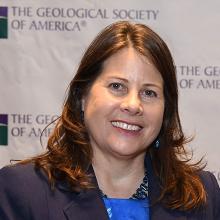
Dr. Janice Bishop explores the surface of planets, especially Mars, using spectroscopy. Her investigations of CRISM data of Mars are revealing clays and sulfates in the ancient rocks that provide information about the geochemical environment at the time the minerals formed. Dr. Bishop studies the spectral fingerprints of minerals and rocks in the lab in order to generate spectral tools for characterization of Mars and other planets. Her research also involves collecting and studying Mars analog rocks and soils at a variety of locations including volcanic islands, cold deserts, hydrothermal regions, acidic aqueous sites, and meteorites which are the only martian samples available on Earth to date.
Janice was elected Fellow of the Geological Society of America and the Mineralogical Society of America and holds two NASA Group Achievement Awards for her contributions to the CRISM Team’s characterization of water on Mars.

Dr. Pablo Sobron has strong interests in robotic space exploration and comparative analogue science - the study of places on Earth that are similar to environments on other planets and moons. Over the past fifteen years, Pablo has logged 3,000+ field work hours all over the world, including work in the Arctic, Antarctic, and desert environments, where he has tested and performed scientific investigations with multiple prototypes of planetary exploration instruments onboard European Space Agency, Canadian Space Agency, and NASA missions. Some of the technologies developed by Pablo’s team include one of the world's most advanced ocean exploration platforms in NASA’s toolbox, an underwater robot to explore extraterrestrial oceans (https://invader-mission.org/ ), and the most sensitive laser Raman spectroscopy sensor currently under development for NASA, a first in class instrument that can detect traces of extinct and extant life in planetary surfaces.
Pablo holds two NASA Group Achievement Awards for his contributions to science and technology advancements for the robotic exploration of the solar system.
